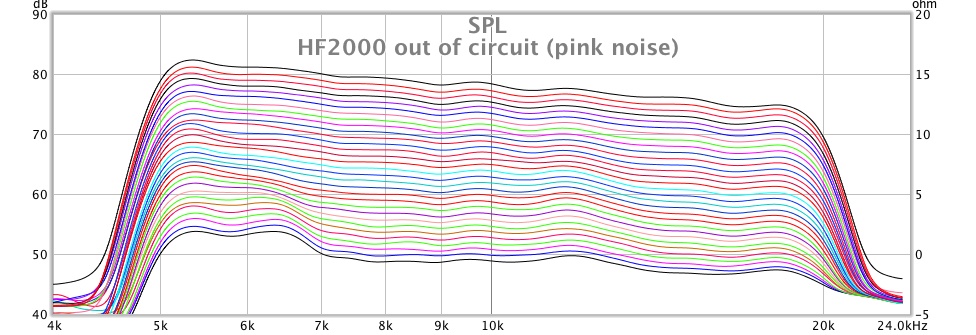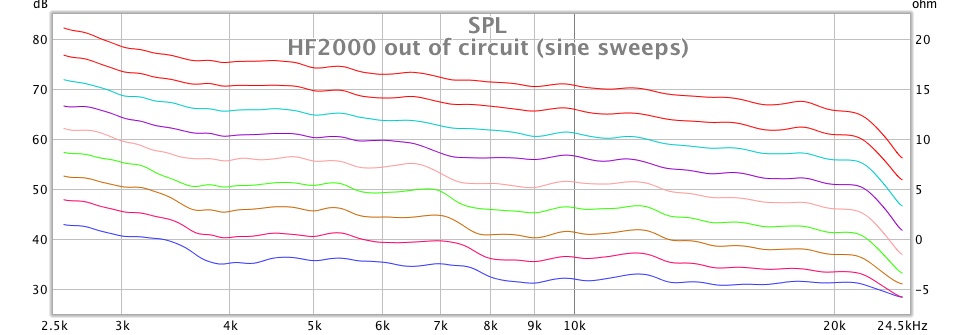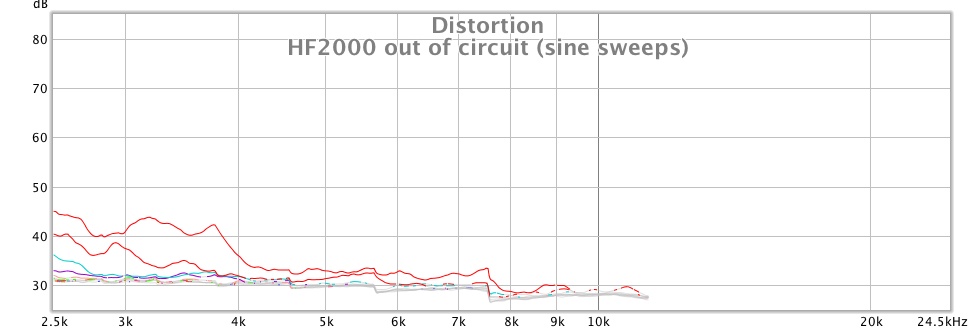ToTo Man
the band not the dog
I was testing a recent tweeter purchase yesterday (Celestion HF2000) and am flummoxed by some very odd behaviour.
I ran an initial periodic pink noise signal through it and the readings appeared ok, it's slightly less sensitive and exhibits earlier HF rolloff than some of my other HF2000 units but such variance is par for the course with these tweeters.
Running sine wave sweeps, however, I noticed the measurements didn't match the initial pink noise measurement, and not only that, each repeated sine wave sweep produced a different HF response! It wasn't the just overall SPL that was different but also the shape of the curve:
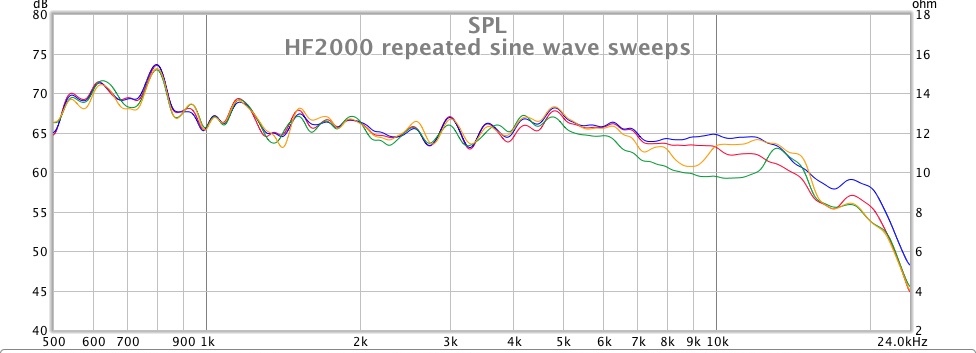
I checked and re-connected the wiring in case I had a poor connection on a crocodile clip etc but the problem persisted. I then swapped this HF2000 out for some of my other HF2000s and these measure consistently, which rules out my DAC, amp, crossover and wiring as potential sources of fault.
Exploring things further today, I've been playing about with periodic pink noise and notice that as I gradually increase the SPL of the pink noise by 1dB at a time, the tweeter's output sounds dull, but then suddenly springs into life when I reach a certain SPL. As I decrease the SPL, the tweeter's output remains strong, but when I reach a level that's about -7dB or -8dB down from the level at which it suddenly 'came to life', it abruptly goes dull again.
It's as if it has a lazy or seized voice coil that needs an electrical kick up the arse to get it working properly! Has anyone else encountered this sort of behaviour from a tweeter?
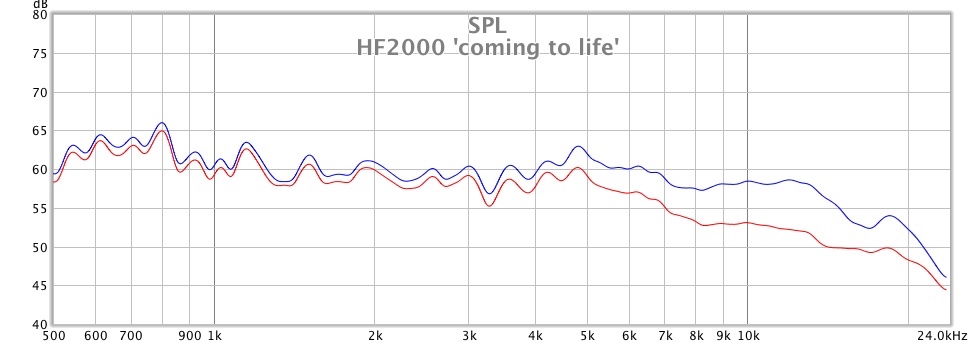
I ran an initial periodic pink noise signal through it and the readings appeared ok, it's slightly less sensitive and exhibits earlier HF rolloff than some of my other HF2000 units but such variance is par for the course with these tweeters.
Running sine wave sweeps, however, I noticed the measurements didn't match the initial pink noise measurement, and not only that, each repeated sine wave sweep produced a different HF response! It wasn't the just overall SPL that was different but also the shape of the curve:

I checked and re-connected the wiring in case I had a poor connection on a crocodile clip etc but the problem persisted. I then swapped this HF2000 out for some of my other HF2000s and these measure consistently, which rules out my DAC, amp, crossover and wiring as potential sources of fault.
Exploring things further today, I've been playing about with periodic pink noise and notice that as I gradually increase the SPL of the pink noise by 1dB at a time, the tweeter's output sounds dull, but then suddenly springs into life when I reach a certain SPL. As I decrease the SPL, the tweeter's output remains strong, but when I reach a level that's about -7dB or -8dB down from the level at which it suddenly 'came to life', it abruptly goes dull again.
It's as if it has a lazy or seized voice coil that needs an electrical kick up the arse to get it working properly! Has anyone else encountered this sort of behaviour from a tweeter?



